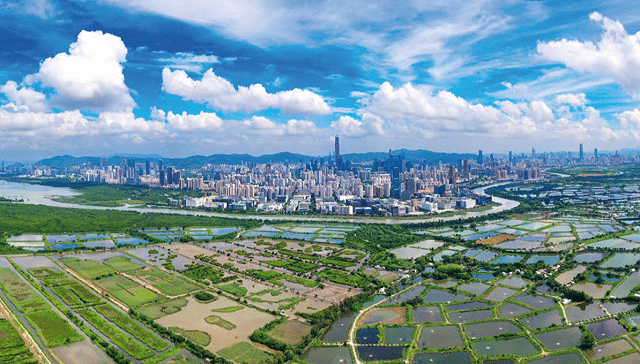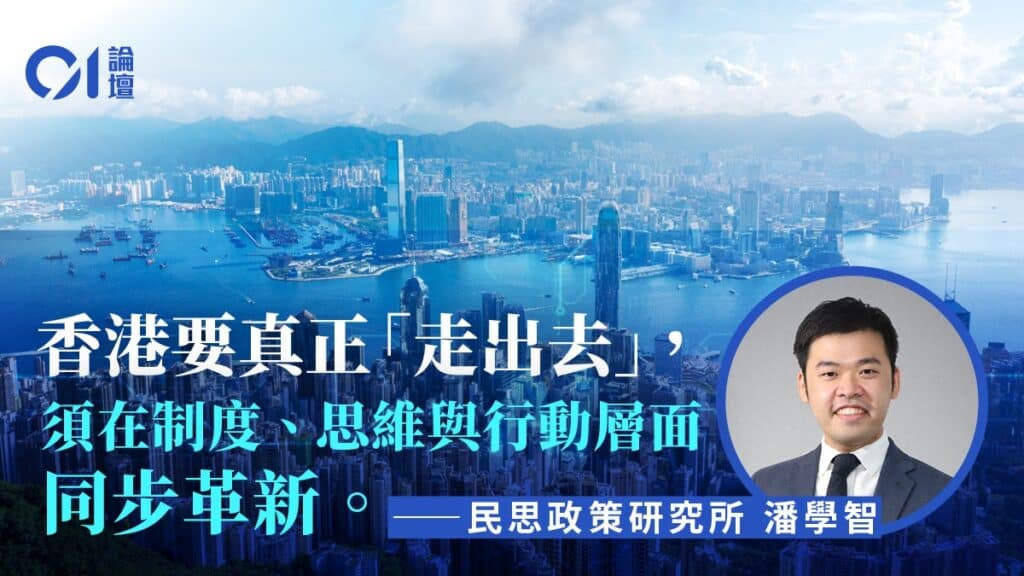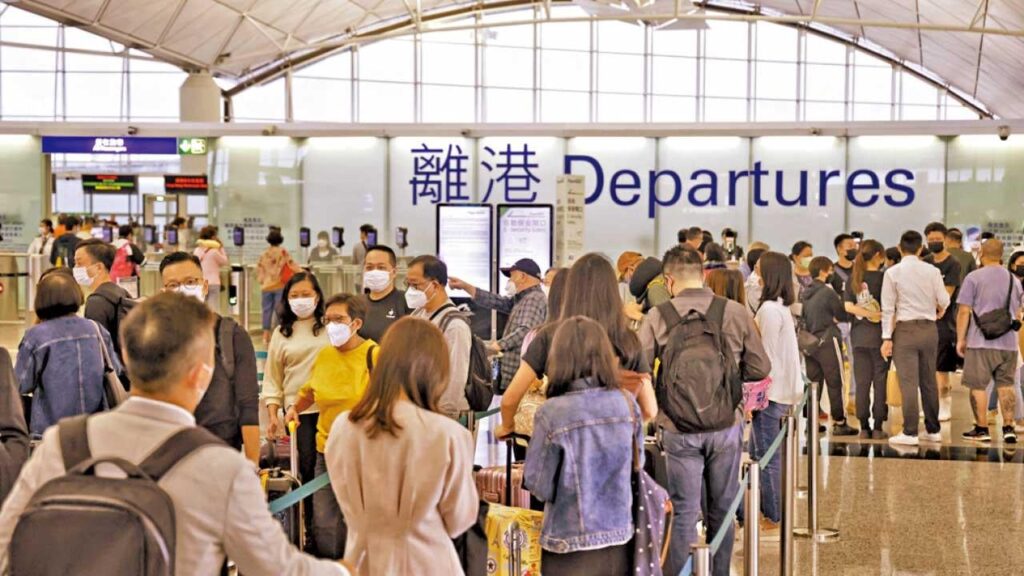Hong Kong has a shortage of development land, insufficient housing supply, and insufficient land reserves to meet development and housing needs. The economic structure focuses on the service industry and the industry is univocal, limiting the employment prospects of young people. The imbalance between jobs and housing has put great pressure on the north-south transportation system, and citizens spend a lot of time and resources on transportation. In order to solve the above three development bottlenecks, the SAR government proposes to develop the northern metropolitan area, open up land space, promote re-industrialization, provide employment opportunities, and release the development potential of the New Territories.
In the area bordering Hong Kong and Shenzhen, Shenzhen has built a distinctive city skyline, but Hong Kong still has large areas of land that have not been developed due to historical reasons. The northern metropolitan area will be based on the northern economic belt in "Hong Kong 2030+" and developed into a metropolitan commercial core area, forming a "twin cities and three circles" spatial pattern. The "Twin Cities" are Hong Kong and Shenzhen, and the "Three Circles" refer to the "Shenzhen Bay Quality Development Circle" that deepens high-end economic cooperation with Qianhai, the "Hong Kong-Shenzhen Close Interaction Circle" that promotes the development of the innovation and technology industries in both places, and the "Hong Kong-Shenzhen Close Interaction Circle" that provides sustainable The "Dapeng Bay/Yinzhoutang Ecological Recreation and Tourism Circle" with eco-tourism opportunities realizes the "14th Five-Year Plan Outline" and the "Guangdong-Hong Kong-Macao Greater Bay Area Development Plan Outline" to support Hong Kong in building an international innovation and technology center and building Hong Kong-Shenzhen Development positioning such as innovation and technology park and improvement of Qianhai Cooperation Zone.
Xintian Science and Technology City accelerates cooperation between Hong Kong and Shenzhen
The government will significantly increase the area of land for innovation and technology in Xintian, build a Hong Kong version of Silicon Valley - Xintian Science and Technology City, a comprehensive community where scientific and technological talents can work and live, and exert a more efficient and large-scale industrial cluster effect. Together with the Hong Kong-Shenzhen Innovation and Technology Park under construction, a total of 237 hectares of innovation and technology land is planned to provide 45,500 to 47,500 residential units and accommodate 148,000 jobs in the innovation and technology industry. The construction of cross-river bridges and the adoption of innovative immigration arrangements will make it easier for the frequent daily cross-border movement of innovation and technology personnel from the two places. Coupled with four transit routes connecting to Shenzhen, including the Tuen Ma Line opening in 2021 and the Xinhuanggang Port under construction, Xintian Science and Technology City will become the area with the most intensive cross-border interaction between Hong Kong and Shenzhen.
The transportation infrastructure will expand the scale and capacity of the Hung Shui Kiu/Ha Cun New Development Area and upgrade it to the core business district of New Territories North. It will develop in cooperation with the high-end economy of the Qianhai Cooperation Zone and create more new economic jobs. Hong Kong and Shenzhen will study the construction of a cross-boundary railway station from Hung Shui Kiu to Qianhai, and an automatic rapid transit system connecting Lau Fau Shan to Pak Nai to facilitate exchanges and interactions between the two places. Hong Kong can also build a large-scale innovation and technology landmark in the business district as a flagship project for in-depth cooperation with Qianhai.
Livable environment and balance work and life
Government facilities without geographical restrictions will be relocated to the northern metropolitan area. The Hong Kong government will also formulate policies and measures, including increasing supporting facilities and simplifying approval procedures, to encourage public and private organizations to expand business in the northern metropolitan area. In order to accelerate the development of high-end economy, the government will improve land grant policies and change land use, such as allowing enterprises to build self-occupied talent apartments on innovation and technology development sites, attracting global innovation and technology talents to work and settle in Hong Kong, and convert some industrial areas into Designated as a "Business and Innovation" zone, shared workspaces are provided to encourage start-ups to settle in, improve the work-housing balance, and create more job opportunities.
The northern metropolitan area has a rich and diverse ecological environment, among which the mangroves of Deep Bay and Mai Po are wetlands of international importance designated by the Ramsar Convention. Hong Kong is expected to formulate a conservation cooperation plan with Shenzhen to establish a complete wetland system across administrative boundaries by combining Futian Mangrove Nature Reserve, Mai Po Nature Reserve, Hong Kong Wetland Park and Long Yuen Ecological Park. The government also plans to take back private wetlands and fish ponds with conservation value, restore them and properly manage them, and establish three wetland conservation parks at Nam Sang Wai, Sam Po Shue and Hoi Hoi Wai. In addition, urban and rural greenways in the North New Territories connect natural ecology, traditional towns and villages, and historical locations, and can create outdoor ecological recreation or tourism spaces with high landscape value.
Faced with development contradictions and challenges in all aspects, Hong Kong needs to grasp the preferential policies and development momentum conferred by national policies, make full use of the advantages and opportunities of neighboring Greater Bay Area cities, and break through the current predicament. Under the spatial structure of "Two Cities and Three Circles", the northern metropolitan area will work closely with Shenzhen to develop the innovation and technology industry and build an international innovation and technology center, comparable to the Victoria Harbor Metropolitan Area that supports Hong Kong as an international financial center, becoming Hong Kong's second economic engine, while promoting the integration of Hong Kong and Shenzhen and enriching the practice of "one country, two systems". "Financial South, Innovation and Technology North", the two metropolitan areas will keep pace with each other and complement each other, igniting new impetus and adding new charm to the overall development of Hong Kong.
Du Julan Co-Director of Shanghai-Hong Kong Development Joint Research Institute
Pan Xuezhi, associate researcher, Shanghai-Hong Kong Development Research Institute



